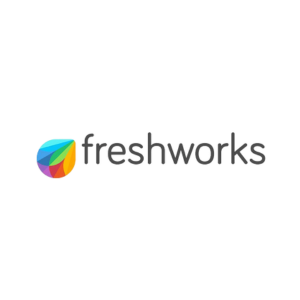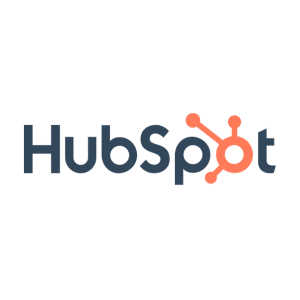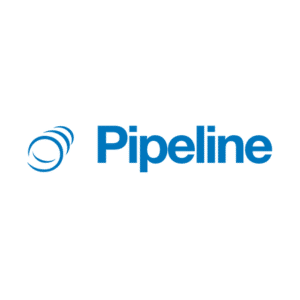Are you constantly jumping between software systems to find all the information about a single customer?
Managing company data can lead to time-consuming processes and missed sales opportunities!
Hi! My name is AJ! And I recently sold my business for multiple seven figures. Now, I invest my time in entrepreneurs striving to build an empire themselves!
I learned several essential business lessons throughout my years as a CEO (most of which were costly).
The importance of organized CRM data was one lesson I’ll never forget!
So, if you’re ready to organize your data so your team can earn more sales and communicate better, keep reading! I’m unveiling all the hidden tips and tricks all small business owners must know!
Key Takeaways
-
CRM data is the information a business stores in its CRM platform. -
A CRM database improves customer and team communication and streamlines several business processes. -
You need a CRM database if your company struggles with lead management and long sales processes. -
CRM databases help teams understand customers, ensuring more personalized shopping experiences.
Related Reading: Best Small Business CRM
SBB Featured Partners
What is a CRM (Customer Relationship Management)?
What is a CRM? Great question!
Customer relationship management (CRM) software is a technology solution that manages and optimizes customer interactions.
Businesses use CRM systems to manage their potential AND existing customers better.
How do CRM tools help companies create better customer relationships?
A CRM system collects, stores, and organizes customer-related information, including the following metrics:
- Basic contact information (name, address, phone, etc.)
- Shopping history with the brand
- Customer support history (questions, problems, queries, etc.)
- Marketing campaign preferences
Although sales teams are the most frequent and widespread CRM users, this technology can benefit the entire company!
What is a CRM Database?
A CRM database is all the customer data your company stores within your CRM system.
There are various types of information companies store in a CRM database.
For example, some examples of data you might store in your CRM software include the following:
- Names
- Job titles
- Location
- Essential contact information
- Contact history
- Lead scoring data
- Product or service order history
- Social media profiles
- Interests
- Special shopping preferences
Storing as much customer information in your CRM system as possible ensures you get the most from the advanced software!
/* widget: Block Quote Slider */
.blox-side-image-blockquote .slick-prev{
background-color:#ffffff;
position:absolute;
left:30px;
bottom:35px;
cursor:pointer;
font-size:24px;
}
.blox-side-image-blockquote .slick-prev:after{
font-family: “Font Awesome 5 Free”;
font-weight: 900;
font-style: normal;
content:’\f104′;
display:block;
font-size:24px;
position:absolute;
left:50%;
top:0px;
margin-left:-6px;
margin-top:-1px;
}
.blox-side-image-blockquote .slick-next{
background-color:#ffffff;
position:absolute;
left:72px;
bottom:35px;
cursor:pointer;
}
.blox-side-image-blockquote .slick-next:after{
font-family: “Font Awesome 5 Free”;
font-weight: 900;
font-style: normal;
content:’\f105′;
display:block;
font-size:24px;
position:absolute;
left:50%;
top:0px;
margin-left:-3px;
margin-top:-1px;
}
– AJ Silber
Why You Might Need a CRM Database
There are several reasons you need a CRM database.
Let’s look at the popular reasons.
Lead Management
A CRM database is an excellent tool if your company has a large volume of sales leads that it can’t manage.
Lead management technology ensures you connect with all your potential customers!
Long Complex Sales Cycles
Long sales cycles are costly, taking valuable time, resources, and money away from your business.
Databases help streamline sales cycles through automation and optimized data!
Siloed Customer Data
Data silos occur when particular team members or departments cannot access specific information because a company’s data lives in multiple places.
A CRM database keeps everything in one location, preventing data silos entirely!
Marketing Automation
Marketing operations can be time-consuming and expensive.
With automation tools, you ensure your marketing team focuses on customer-centric tasks rather than repetitive ones like sending emails!
Benefits of a Good CRM Database
Is a CRM database necessary for your small business?
Here are the game-changing benefits associated with a high-functioning CRM database!
One Place for Customer Communication
CRM databases create a singular, organized space for customer information.
As a result, all of your company’s customer communication records are stored and organized, ensuring customer service agents provide the best support possible.
Creating one place for customer communication ensures no critical details slip through the cracks; this leads to higher customer satisfaction and productive employees!
Automated Data Entry
The tedious process of entering customers’ data manually is a thing of the past with CRM databases!
CRM systems automated manual data entry processes, saving time and energy.
Manual data entry is at high risk of human error because people quickly get bored with mundane, repetitive tasks like this.
However, a customer relationship management system handles this task with ease!
Organized Contact Lists
Staying organized can be challenging if you sell products or services to multiple customers (which any successful business does).
CRM databases provide an easy way for small business owners and sales teams to filter customer information quickly, ensuring faster responses to inquiries and better customer service overall!
Also, CRM software allows users to segment customers into different lists based on their preferences, making it easier to craft personalized campaigns.
Better Sales Reports
CRM tools help your business manage customer relationships.
But did you know this technology can also create in-depth sales reports?
Think about it.
A CRM system constantly collects information, including all the metrics related to your sales team.
As a result, your company can access advanced reports that ensure you make data-driven decisions!
Streamlined Communications
Communication is essential when it comes to providing the best customer service.
But if your company still uses traditional methods of communication, like phone or email, you’re missing out on opportunities.
A CRM database stores customer data in real-time and keeps track of all customer interactions; this ensures no one falls through the cracks!
Also, a CRM database automates communication with customers and leads using email marketing and SMS campaigns.
Automation saves your customer service reps valuable time!
Business Stability
A CRM database helps your company manage customer relationships throughout the sales process, ensuring business stability.
In addition to helping you keep track of customers and leads, a CRM system also stores all shopper interactions in one place.
Centralized data storing allows you to build better relationships with existing customers while building trust with new ones!
As a result, your business remains competitive and stable.
Personalized Customer Experiences
A CRM database helps your sales and marketing teams create personalized customer experiences.
How?
Remember, CRM database software continually collects, stores, and optimizes data.
Therefore, the system finds patterns, preferences, and unique ways your sales team can pitch to each customer segment.
Also, because a CRM database creates a 360-degree customer profile, your team understands who they’re selling to and sees them more as people and less as numbers on a report.
Better Sales Procsesses
CRM solutions are designed to support sales processes and ensure your team is successful!
For example, CRMs pick apart your sales pipeline and find ways your team can optimize it.
Additionally, CRM tools utilize automation to streamline the sales process, ensuring your sales team focuses more energy on customer-centric tasks.
Government Compliance
Data privacy is critical.
You MUST ensure sensitive customer information (Social Security numbers, credit card information, etc.) is safe and secure!
With a CRM database, you can ensure your business meets all the government compliance regulations and ensure customer data is secure!
Types of CRM Databases
There are three types of CRM databases.
It’s critical to understand the differences to ensure your company utilizes the right tool and features!
Let’s look at these three CRMs!
Open Source CRM Systems
Open-source CRM tools are solutions that are available online, and a company downloads and installs them on its own servers.
An open-source CRM database system allows companies to build and customize based on how they must use the software.
Also, these solutions give the company complete control over relevant data (plus they’re inexpensive!).
On-Premise CRM
An on-premise CRM tool is software that lives on a company’s servers.
However, this type of CRM database requires dedicated hardware, IT staff to manage it, and considerable attention.
Although it’s expensive, on-premise CRMs are feature rich!
Cloud-Based CRM
A cloud-based CRM solution is the most popular option because companies can install it quickly and easily.
These systems run on the provider’s servers, meaning companies don’t have to maintain them.
Also, cloud-based databases allow team members to log in and access marketing automation tools, sales processes, etc., from any location!
/* widget: Block Quote Slider */
.blox-side-image-blockquote .slick-prev{
background-color:#ffffff;
position:absolute;
left:30px;
bottom:35px;
cursor:pointer;
font-size:24px;
}
.blox-side-image-blockquote .slick-prev:after{
font-family: “Font Awesome 5 Free”;
font-weight: 900;
font-style: normal;
content:’\f104′;
display:block;
font-size:24px;
position:absolute;
left:50%;
top:0px;
margin-left:-6px;
margin-top:-1px;
}
.blox-side-image-blockquote .slick-next{
background-color:#ffffff;
position:absolute;
left:72px;
bottom:35px;
cursor:pointer;
}
.blox-side-image-blockquote .slick-next:after{
font-family: “Font Awesome 5 Free”;
font-weight: 900;
font-style: normal;
content:’\f105′;
display:block;
font-size:24px;
position:absolute;
left:50%;
top:0px;
margin-left:-3px;
margin-top:-1px;
}
– AJ Silber
Core Elements for Building a CRM Database
A CRM database is extremely valuable because of its many functions!
When you collect customer data, there’s a flood of opportunities that take your business to the next level.
Let’s look at the core features of a CRM database.
People Management
People management pertains to the comprehensive management and organization of your customer data.
This feature allows businesses to meticulously track all interactions with each customer, providing a deeper understanding of their behaviors, preferences, and needs.
People management includes details like:
- Contact information
- Purchase history
- Customer service interactions
- Social media activity
Contact Management
Contact management is a crucial element of every CRM strategy!
Contact management capabilities automatically update contact details, ensuring sales reps don’t have to.
As a result, your team can close more deals because they dedicate more time to customer-centric tasks!
Lead Management
A CRM solution can help your company manage its prospective customers, which is especially helpful if you have a high volume of leads!
CRMs set automatic reminders for each contact, ensuring prospects are assigned to the right salespeople and nothing slips through the cracks.
Customer Service
Customer service is another critical CRM database element.
CRM data collects everything customer support agents need to solve customer problems quickly.
Therefore, these agents don’t have to jump between programs to handle a single customer inquiry; instead, everything’s in one place!
Marketing Automation
CRM solutions and data allow businesses to automate marketing campaigns with ease.
For example, you can send automatic emails based on customer behavior (like purchases or abandoned carts).
Also, CRMs help create segmented lists for targeted campaigns and monitor the results of each campaign in real time!
Reporting and Analytics
Finally, businesses can use CRM data to create comprehensive reports that simplify decision-making.
These reports deliver valuable insights about customer behavior and trends, helping you understand where your company needs to improve.
Features like a comprehensive dashboard ensure your team can quickly access the necessary information and understand the sales pipeline better.
How to Set Up a CRM Database
Now, it’s time to learn how to set up a high-functioning CRM database!
You may think this is daunting, but if you follow these six steps, you’ll be well on your way.
Step 1: Choose a CRM
The first step is choosing the best customer relationship management system for your team.
Each company requires a different kind of CRM strategy.
Still, the tools and features you should look for include the following:
- Customizable sales pipelines
- Automated workflows
- Dashboards
- Contact and lead scoring
- Sales forecasting
- Real-time reports
- Third-party app integrations
Step 2: Plan the Data Migration
Next, you must plan how your team will transfer your company’s existing data into a new platform.
Data migration can be time-consuming, but it’s an essential part of the process!
Ensuring your CRM database has accurate, clean data creates a higher chance of long-term success, so take this step seriously.
Step 3: Data Migration Analysis and Design
After you have a clear plan for your data migration, you’ll need to analyze and design it.
This step is where the technical work begins!
You must map out the data that needs to be migrated from its source location into the CRM.
Remember to clean up any duplicate or outdated entries before transferring them!
Step 4: Data Migration Implementation
Once you have your data migration plan and design, it’s time to implement the process!
Depending on the complexity of the CRM project, you can do this yourself or consult with a professional.
Hiring an outside party to transfer data will cost a little extra, but the price is worth it, especially if you have a considerable amount of data.
Step 5: Integrate Your Existing Tech Stack
Connecting CRMs to third-party integrations lets you get even MORE information into your CRM database.
For instance, if your CRM software integrates with social media platforms, you can boost your email marketing list by adding a signup form to your profile.
Customer relationship management databases thrive when you continually feed them information, so utilize third-party sources to your advantage!
Step 6: Maintain Your Customer Data
An accurate customer database is integral.
When CRM databases are unorganized and cluttered, your team receives inaccurate reports and recommendations.
Maintaining customer database software can involve the following practices:
- Deleting duplicate records
- Removing unengaged contacts
- Filling in incomplete records
- Formatting data similarly throughout your entire system
CRM Database Examples
Here are two CRM database examples to help you understand how valuable this technology is!
First, let’s consider a web-based shoe store, “Footprints.”
Footprints has recently implemented a CRM database to help manage customer relationships.
When a customer visits the Footprints website and makes a purchase, their contact information, purchase history, and preference data are stored in the CRM system.
And if the customer signs up for the newsletter, this action is also recorded in the database.
Further, when the company drops a new line of shoes that aligns with the customer’s previous purchases, the CRM system triggers an automated email about the new collection.
Additionally, if the customer had previously abandoned a pair of shoes in their cart, the CRM system sends a reminder or offers a 5% discount code.
Let’s look at another example. This time, I’ll use a fictional health and wellness center called “World’s Best Gym.”
World’s Best Gym can use a CRM database to track data across the entire customer journey.
For instance, this company can collect the following data:
- Abandoned cart rates
- Customer support tickets
- Email analytics
- Customer retention rates
With accurate CRM data, World’s Best Gym creates email marketing campaigns that promote membership plans, merchandise, and vitamins and supplements.
And because CRM databases sort data based on customer segments, World’s Best Gym ensures they’re sending the right promotional deals to the proper segments.
How to Optimize Your CRM Data
Here are three ways to optimize your CRM data!
Invest in Data Governance
Investing in data governance ensures your CRM data is consistently managed and meets strict standards over its entire life cycle.
This practice is crucial as it provides a certain level of control and security over your data.
Invest in Data Automation Tools
Data automation tools help you streamline your data entry process.
These tools can automate manual entries, cleaning activities, and reporting processes.
The result? You save time and effort when managing customer data!
Report Metrics using CRM Data
Finally, use CRM data to report on the success of your customer relationship management initiatives.
For example, if you track customer lifetime value and retention rates in your CRM database, you can determine how successful your loyalty program is.
Is a CRM Database Needed for SMBs?
A CRM database keeps vital information safe and organized.
With a high-functioning database, your company can offer more personalized experiences and increase customer retention rates!
What type of CRM database will YOUR company implement? Let us know in the comments section!
And remember, each company’s CRM needs vary depending on its size, industry, and budget.
The post What is a CRM Database? Explained for SMBs appeared first on Small Business Bonfire.
The post originally appeared on following source : Source link



